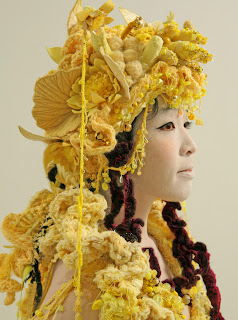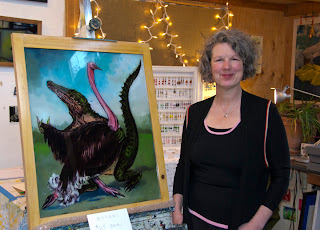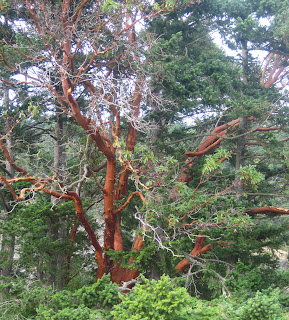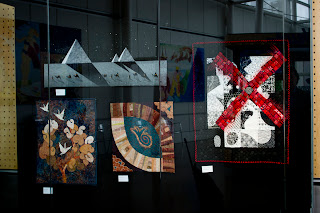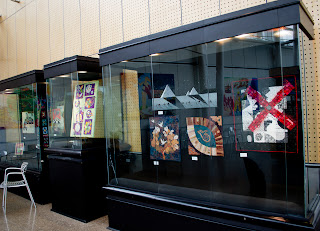While I currently define myself as a “fiber and mixed media artist”, I struggle with the definition. I started early on as a seamstress,then as a costume designer. I moved to being a quilter for a short while, then specialized in art quilts. I’ve played around with many styles, but basically feel my niche is in representational art.
When I started falling in love with making my own fabric, I became a surface designer. But, I was still pretty wrapped up in using my fabrics in my quilts. Now, I’m moving even more to embroidery. Whether it’s dense machine embroidery, thread painting, intricate machine quilting, or hand work, stitch seems to give me a tactile grounding that no other medium has for me. But how do I define myself? Where does this work fit in?
I know that most shows that are quilt-centered are very strict about their definition of a quilt… 3 layers connected with stitch, often needing to be professionally bound in some way. If I decide to create a stitched piece and stretch it over a frame or canvas, then it won’t qualify. So the question is, how important is it to me to fit into the categories that show producers have come up with? Or even, how important is it to me to continue to exhibit? Is it more important to create and then find the right niche for my creations, rather than creating to fit particular guidelines?
While I don’t feel like I have a strong enough discernible style or large enough body of work to go into solo shows, I do enjoy having my work out in front of the public. The question is, will work that is not formally a “quilt” get accepted into shows? Do I feel I need to break out of confines of being defined as a quilter?
I don’t know that I have the answer for that yet. Maybe as I work out my goals for the upcoming year, it will become more clear to me. How do you define yourself? I’d love to hear your thoughts!
 Quick tip for productivity: I recently found the iPhone app “Evernote“. This is a way to organize all your notes, including Word docs, Adobe Acrobat PDFs, and simple text inputs. You can also use it online or download a version to your computer, as well. They all sync together. You can organize notes into notebooks (so I have one notebook for my studio, one for family, one for my blog, etc.) and put as many items within each notebook as you want. It’s a great tool!
Quick tip for productivity: I recently found the iPhone app “Evernote“. This is a way to organize all your notes, including Word docs, Adobe Acrobat PDFs, and simple text inputs. You can also use it online or download a version to your computer, as well. They all sync together. You can organize notes into notebooks (so I have one notebook for my studio, one for family, one for my blog, etc.) and put as many items within each notebook as you want. It’s a great tool!
















